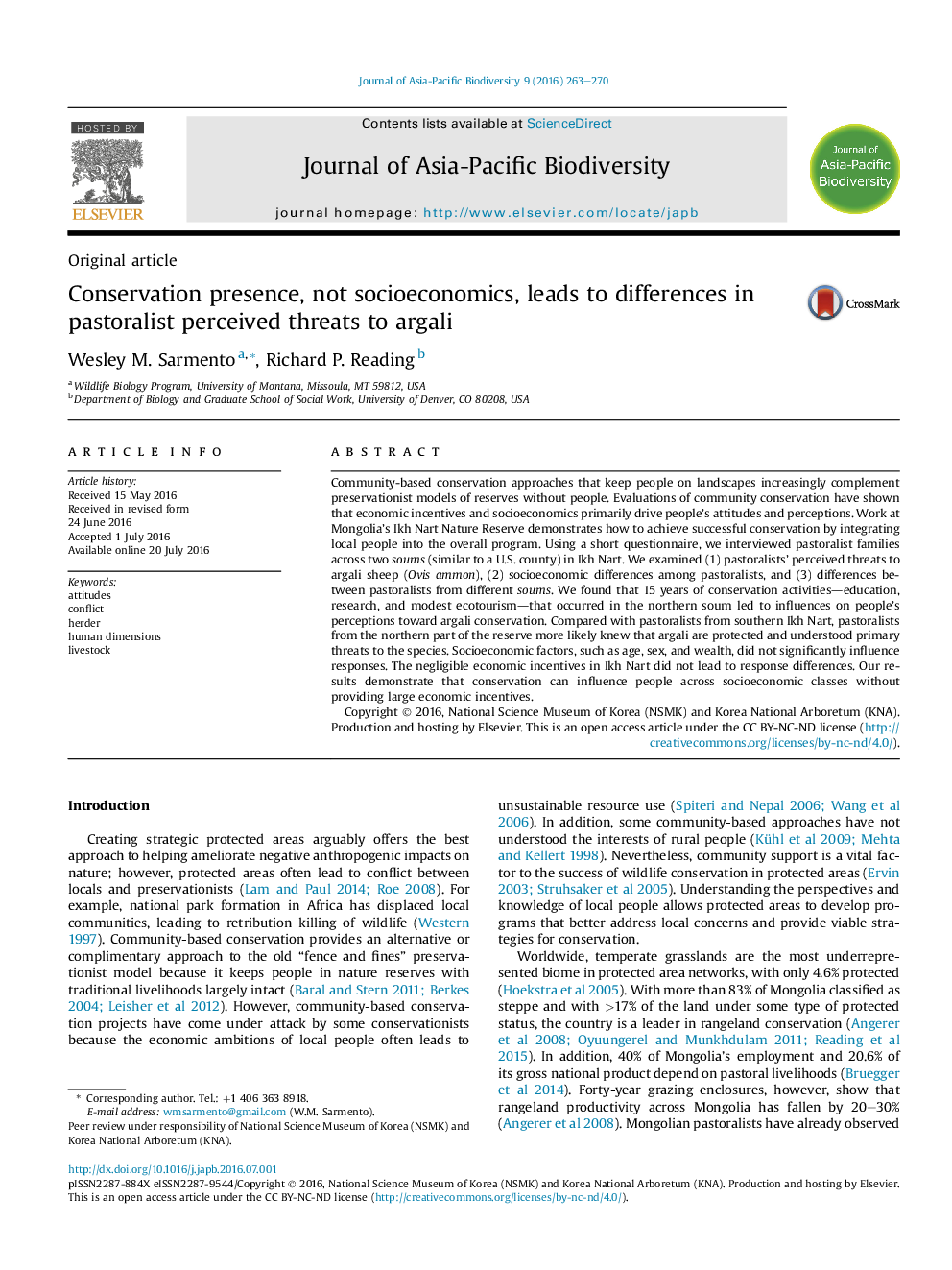| کد مقاله | کد نشریه | سال انتشار | مقاله انگلیسی | نسخه تمام متن |
|---|---|---|---|---|
| 4394921 | 1618294 | 2016 | 8 صفحه PDF | دانلود رایگان |
Community-based conservation approaches that keep people on landscapes increasingly complement preservationist models of reserves without people. Evaluations of community conservation have shown that economic incentives and socioeconomics primarily drive people’s attitudes and perceptions. Work at Mongolia’s Ikh Nart Nature Reserve demonstrates how to achieve successful conservation by integrating local people into the overall program. Using a short questionnaire, we interviewed pastoralist families across two soums (similar to a U.S. county) in Ikh Nart. We examined (1) pastoralists’ perceived threats to argali sheep (Ovis ammon), (2) socioeconomic differences among pastoralists, and (3) differences between pastoralists from different soums. We found that 15 years of conservation activities—education, research, and modest ecotourism—that occurred in the northern soum led to influences on people’s perceptions toward argali conservation. Compared with pastoralists from southern Ikh Nart, pastoralists from the northern part of the reserve more likely knew that argali are protected and understood primary threats to the species. Socioeconomic factors, such as age, sex, and wealth, did not significantly influence responses. The negligible economic incentives in Ikh Nart did not lead to response differences. Our results demonstrate that conservation can influence people across socioeconomic classes without providing large economic incentives.
Journal: Journal of Asia-Pacific Biodiversity - Volume 9, Issue 3, 1 September 2016, Pages 263–270
